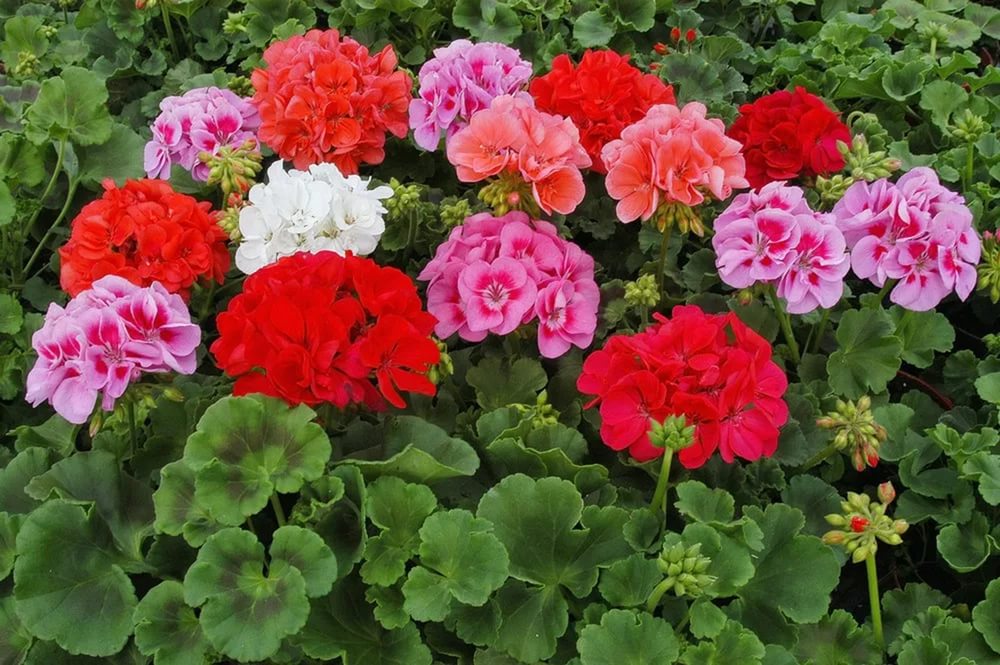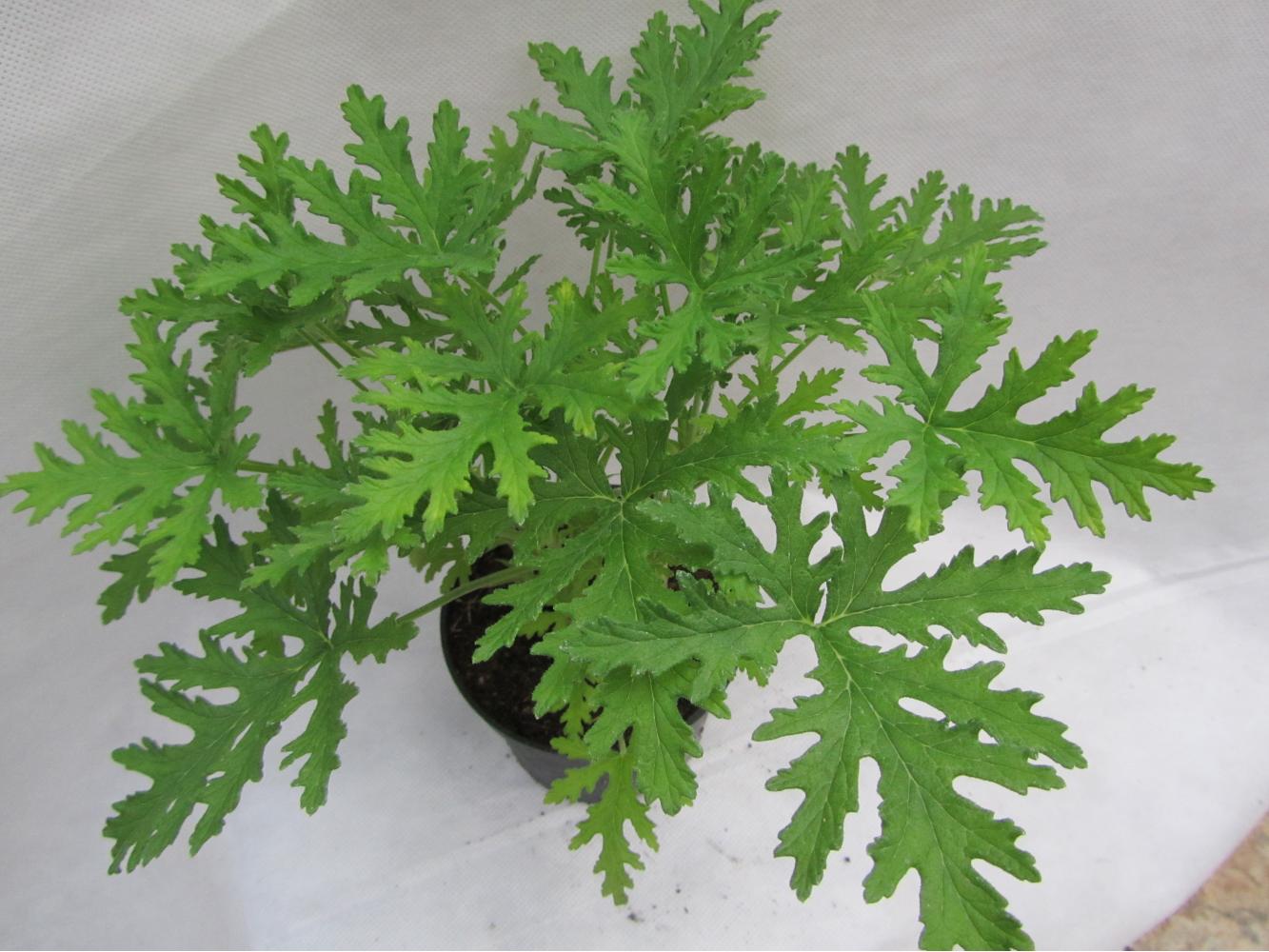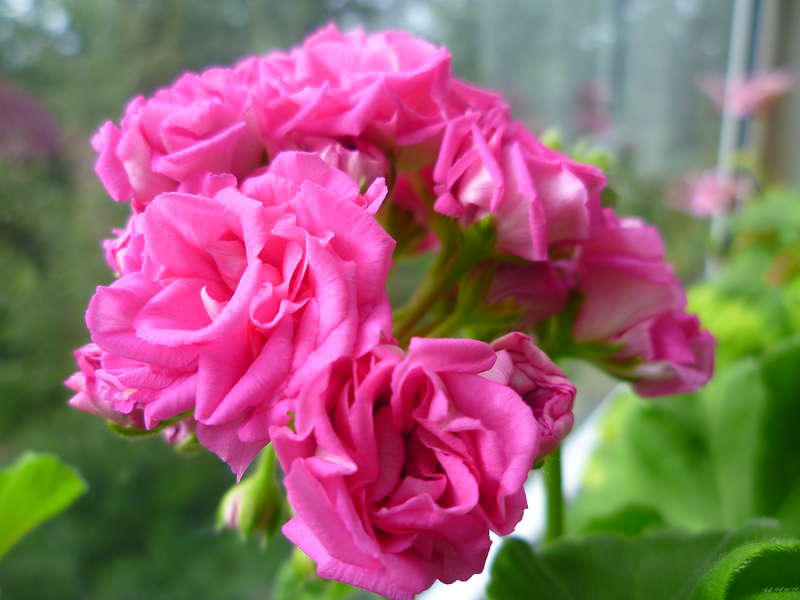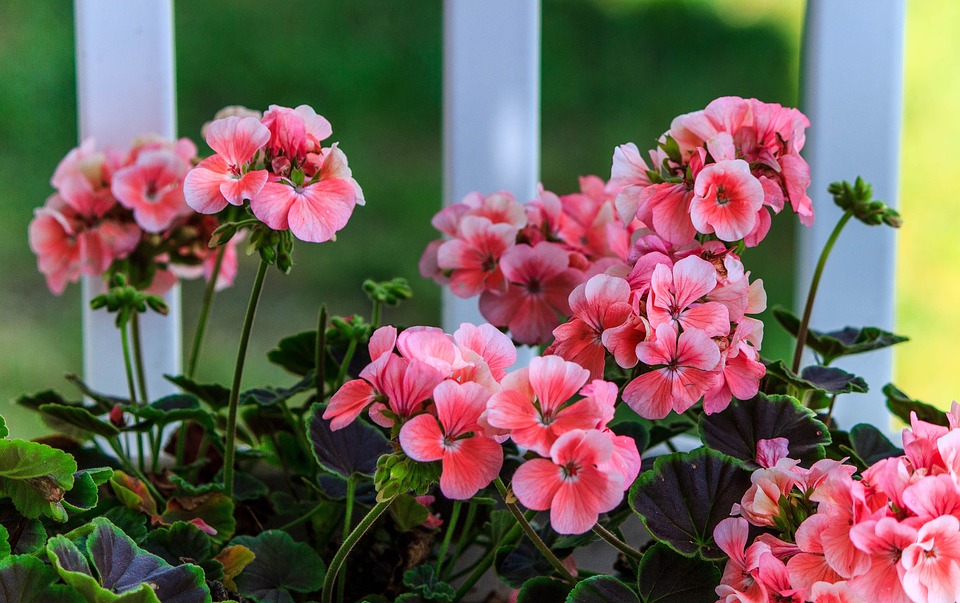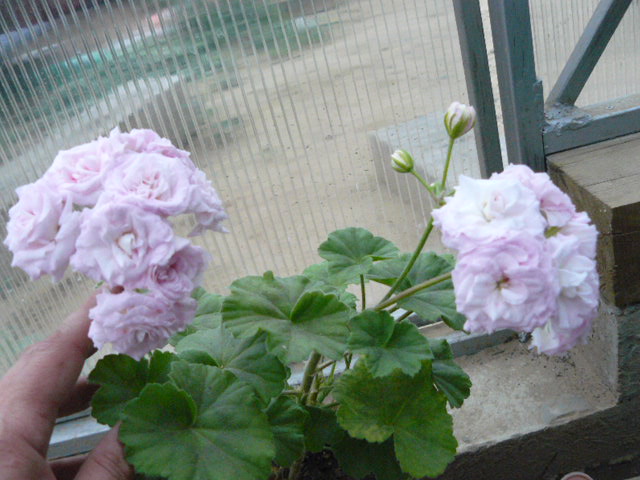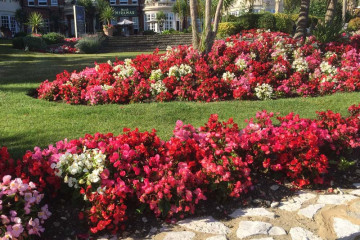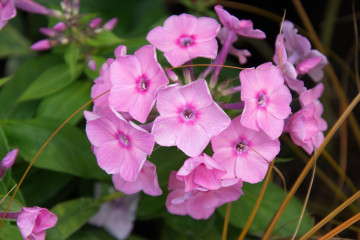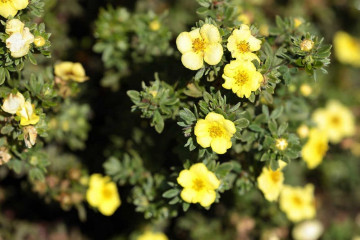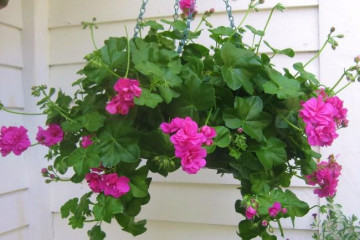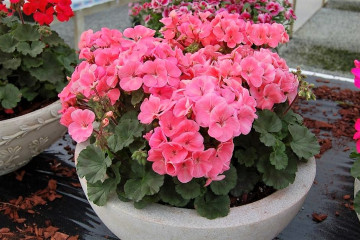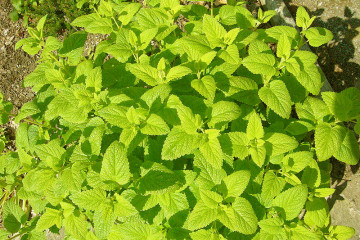Geranium varieties - what does lemon and field geranium look like
Content:
Geranium is an unpretentious plant grown in flower beds and rooms. It has a large number of colors, thanks to which it is used in design.
There are many types of geranium: professional gardeners number at least 45 of them. There are about 70 thousand of all varieties, they can be called the most exotic names. All of them differ in terms of zonal growing conditions, characteristics of care, flowering time, height, leaves and flowers, and other properties. Some of them can curl.
What does geranium look like
Readers are interested to know the description of what geraniums look like. It is an annual herb about 50 cm high. It has bright green leaves. They are large and have a pleasant lemon scent. They have a peculiar pattern in the form of a white border. Some varieties of geraniums have double and darker leaves. This may mean that the variety is elite. Geranium seed is large.
The plant blooms at different times. Flowers can have all kinds of colors. Some varieties don't smell. Fragrant geraniums exude a very pleasant smell, refreshing the premises. Especially beautiful are the flowers of pelargonium Silk swan, geranium Samobor, geranium Gourmet.
Pelargonium and geranium varieties
Lemon geranium
This is a type of scented pelargonium. The plant is quite tall, with heart-shaped leaves that have sharp tips. The name is given for its characteristic smell.
Lemon geranium grows up to 70 cm in height and 35 cm in width. Blooms infrequently. The leaves have a beautiful graceful shape and are framed in the form of lace. Shades of leaves vary from light green to rich green. In some varieties, the leaves show purple, burgundy hues.
The flowers are light, small, grow both lonely and in inflorescences.
Lemon geranium loves a lot of sun. Its aroma improves sleep. The plant purifies the air, so it is recommended to place it in the kitchen. Geranium can be outdoors, in which case it must be protected from direct sunlight.
Do not place the plant near the air conditioner, near the battery. Lemon geranium is afraid of the draft. The optimum air temperature is about 20 degrees. The plant needs regular watering (daily in summer).
Pelargonium Lara Harmony
It is one of the most common geranium species. Pelargonium is unpretentious in care.
Pelargonium lara harmony has a straight stem with developed roots. The leaves are round, finger-like, dark green, with a bloody red or brown circle. Emit a mint smell. The leaves are covered with soft, fleecy hairs.
Pelargonium Harmony blooms for a long time: under favorable conditions - all spring, summer. If the lighting is good, then Lara Harmony pelargonium can bloom in autumn and even winter. If the plant blooms year-round, then it has small, pale flowers.
After flowering, seed pods appear. The plant can withstand frosts up to 28 degrees. Requires good watering and does not withstand drought. The soil should be slightly acidic. In order for the plant to bloom well, you need to add a little leafy soil.
Pelargonium requires lighting and space.In the summer, it needs to be watered every other day.
Yellow geranium
This is a fairly rare plant. The bush has dense foliage. Branched stems. Flowers are collected in umbellate inflorescences. The leaves are pubescent.
Yellow geranium loves light and warmth and requires a lot of space. At the same time, direct sunlight should be avoided.
There are many varieties of yellow geranium. Their flower color varies: from pale yellow to rich, the color of the leaves - from light green to dark green.
For yellow pelargonium, too nutritious soil is not needed. Drainage must be done in the pot. The soil should be loosened periodically.
Field geranium
It is a herbaceous perennial plant with a rhizome and ground part up to 80 cm high. Wild geranium is much lower. The lower leaves are pinnate, the upper ones are short. The stems are pubescent and have a pleasant spicy aroma. The flowers are mostly purple, blue. In decorative varieties, they can be terry.
Field geranium bushes take root well in the garden. Blooms for at least 2 months.
Geraniums can be dug up in the meadow or at the edge and planted in the garden. The soil should be fertile, moderately moist.
Geranium pink
It is an upright, branched and evergreen shrub. Reaches 1.3 m in height. The branches of pink geranium become lignified over time. The leaves have fine hairs and a pleasant rose scent. They are heart shaped. Five-petalled flower, placed in umbrellas. Each petal has crimson stripes. It blooms from late winter to early summer with a peak in spring.
Pink geranium is a thermophilic plant. It requires a little moisture. Feels good in a hanging basket, container. Pink geranium does not tolerate severe frosts.
Pelargonium Rococo
This is a spectacular and very beautiful geranium variety. The flowers are very delicate and resemble roses. They are grouped into beautiful large inflorescences. The buds are large and lush. The petals of Pelargonium Rococo have a delicate pink color. The foliage is pale green.
Pelargonium Rococo is an unpretentious plant. She is very fond of sunlight, in shaded places it will not bloom profusely and beautifully. In order for geraniums to please with their flowers at home, the pot must be placed on a well-lit windowsill.
Compliance with the lighting conditions for rococo pelargonium ensures the presence of large flowers throughout the growing season. It is in well-lit places on the leaves that a beautiful contrasting belt appears.
Optimal temperature conditions for a plant are about 20-23 degrees during the day and 15 degrees at night. It feels good outdoors in summer.
The soil for geraniums should be nutritious and loose. Watering should be sufficient.
Pelargonium Pink Rambler
This plant is distinguished by the buds of a rare two-colored color. Their appearance resembles a rose. Pink Rambler bush reaches 60 cm in height. The leaves have a specific scent and are rich in geranium essential oil.
This geranium can be grown at home and in the garden. Moreover, in the garden area, it will give buds from spring to early autumn.
This geranium loves loose and not very nutrient-rich soil. It is enough to plant 10 seedlings on one square meter. The optimal time for planting in open ground is early June. The first week after planting, the seedlings need to be watered abundantly. Top dressing at this time is not necessary.
The faded inflorescences of pink rambler pelargonium need to be cut off, so the plant will direct its forces to the buds. Geraniums are fed on warm days.
Pelargonium Grandiflora
In this plant, the upper 3 petals of the flower are large, the 2 lower ones are smaller. The flowers are large. Some flowers have double inflorescences of different colors: from white to purple. Shoots reach 50 cm in height.
The plant has no characteristic odor. It blooms for only a few months. Pelargonium requires good lighting (it must be protected from the scorching rays of the sun). In hot weather, it must be shaded on the window so that there are no burns. The ideal place for pelargonium is a glazed balcony or loggia.
In winter, in the process of caring for Grandiflora pelargonium at home, a temperature of about 15 degrees is needed, otherwise it will not bloom in spring. She needs good watering and drainage. It is impossible to fill in the plant - it will die in the marsh soil. In spring and summer, you need to feed pelargonium with potash fertilizers. Remove wilted flowers. Transplant the plant every 3 years.
Himalayan garden geranium
It is a beautifully flowering rhizome perennial plant. The stems of the Himalayan garden geranium and plenum are low and branched, up to 30 cm high. The flowers are large, purple, blue or blue, with red tomato-colored veins. Himalayan geranium blooms from late spring to mid September.
The plant loves the sun, but feels good in shaded areas. Here the flowers get bigger.
Planting and caring for Himalayan garden geraniums is easy. Geranium likes the soil to be loosened and well watered. For abundant flowering, it is important to feed it with complex fertilizers.
Himalayan geranium needs abundant watering.
Pelargonium Richard Hudson
This plant is cultivated in Russia only as an indoor plant. The bush is very compact and dense. The leaves are small, green. The flowers are double, their edges are serrated. A shade of pink with small splashes, specks, may differ in some varieties. Inflorescences are densely packed.
The lighting for Richard hodgson varietal pelargonium should not be too intense. At noon, the plant needs to be shaded. Coolness is important for him at night. Pelargonium hibernates at a temperature of about 10 degrees, after which it will bloom better. Drafts are harmful for pelargonium Richard Hudson.
Pelargonium and geranium - the same thing or not
Pelargonium and geranium are very similar in appearance. However, they differ:
- they cannot be crossed because they are genetically different;
- geranium comes from the northern regions, so it tolerates frost well;
- pelargonium is an inhabitant of southern countries, in winter it should be in a greenhouse or at home;
- Pelargonium is grown on balconies, geranium can feel great in the garden, that's the difference.
The unpretentiousness of geranium, its high decorative qualities led to the wide distribution of the plant among flower growers. Properly selected conditions for its growth make it possible to enjoy beautiful and long-lasting flowering.
